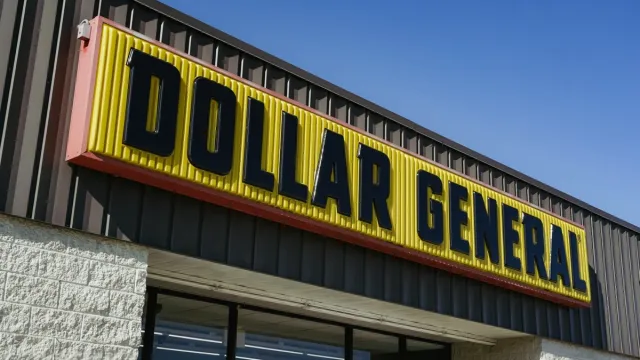Shoppers Are Abandoning Dollar General and Family Dollar—Here’s Why

As we all know, life is expensive right now—it feels like we can’t get a break from never-ending upticks in bills and rising prices at the supermarket. These circumstances typically prompt many people to turn to dollar stores, but according to data and news of upcoming store closures, that isn’t the case right now. Per a new report from CNBC, shoppers are abandoning Family Dollar and Dollar General. And there are a few reasons why.
RELATED: 4 Dollar Tree Items to Buy Before Their Price Goes Up.
Both dollar stores are struggling, but in Dollar General’s case, sales remain up, just not at the level analysts initially predicted, John Strong, professor of business administration at William & Mary, told CNBC. Illustrating this, shares dropped over 30 percent in the last year.
Family Dollar, on the other hand, has never been the most lucrative of the dollar store bunch, Strong told CNBC. It has a different customer base and store model from its parent company, Dollar Tree, which is a modernized “old-fashioned variety store.” This contrast has made the merging of both businesses that much more difficult.
When compared with its larger competitor, Dollar General, Family Dollar also never really caught up. Per CNBC’s data, Family Dollar does about $15 billion in annual revenue, compared with Dollar General’s $39 billion.
“Family Dollar was never as good a business as Dollar General,” Strong said. (Dollar Tree is actively trying to improve Family Dollar business by shuttering 1,000 stores that were deemed “underperforming.”)
RELATED: Dollar General Is Slashing Self-Checkout at 14,000 Stores.
While the numbers speak for themselves, it still feels counterintuitive: We’re spending more than ever on groceries and necessities, yet customers are dodging some of the most affordable sellers of these items.
For their part, shoppers say that a combination of factors have them taking their business elsewhere.
Ruth Colvin-Graves, a once-regular Family Dollar shopper in Columbus, Ohio, told CNBC she turned to the dollar chain for necessities—drawn in by discounts and convenience. But she’s since changed her tune.
“They lost their focus on who exactly their customer base was,” she told the outlet, citing the higher prices, quality issues, staff shortages, and the overall in-store experience.
“On any given day, you had to maneuver around boxes in aisles, and items were not placed where they should be,” Colvin-Graves concluded.
As Strong told CNBC, increased competition in the value retail space is a major factor affecting dollar stores’ decline. Walmart, specifically, is drawing more customers in, while discount grocery chain Aldi has also taken its share of shoppers in small towns.
Unlike Walmart and Aldi, which are discount retailers, dollar stores are pegged to an even more affordable price point—and they’ve caught flak in recent months and years after they raised prices due to inflation.
RELATED: Hobby Lobby Employee Explains Why It’s “Just an Expensive Dollar Tree Now.”
Angela Rogers, a Dollar General shift leader who became an assistant manager in Ohio, also shared her observations of the lackluster customer experience. According to Rogers, while lower prices drew customers in, the store was still unkempt and workflow was difficult.
“It was impossible to get tasks done; there was never enough time to do them,” Rogers explained, citing general tasks like stocking shelves and assisting customers.
All of this had to be done amid high employee turnover, too. Rogers said that Dollar General should have pulled back on growth and invested more in employees and cleaning up stores, making them “presentable.”
But that’s actually the problem, according to experts: Dollar stores focused on growth and lost sight of their operations and customer experience.
“Dollar stores have to figure out how to improve the customer experience. Understanding your customers’ needs and how to service those needs is marketing 101,” Michael Della Penna, chief strategy officer with InMarket, told CNBC.